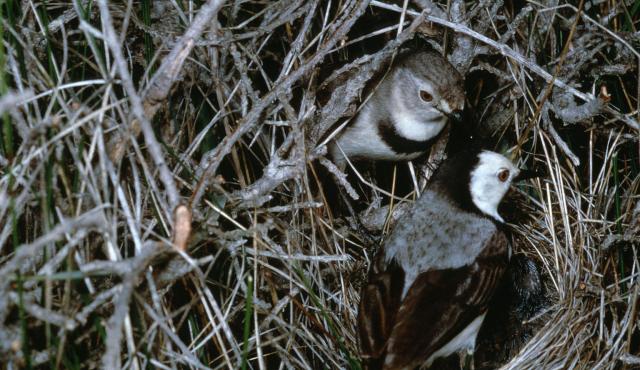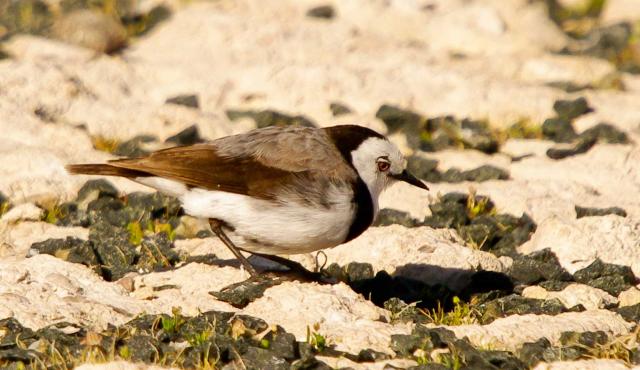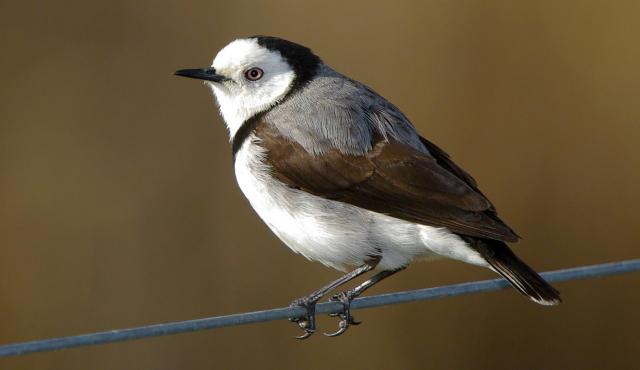A range of teacher professional learning programs will be developed to accompany the Biodiversity of the Western Volcanic Plains online outreach...




White-fronted Chat
Epthianura albifrons
Breeds from July-January. Males and females form pairs at the end of winter while feeding in flocks. The male carefully guards the female and defends a small nest site territory. The female builds a cup nest of grass and twigs in a tussock or low shrub. Both male and female assist with incubation of the eggs and feeding of the young.
| Details | Description |
| Type | Bird |
| Group | Honeyeater |
| Identifying Characteristics | |
| Distinctive Markings | The male has a distinctive black, white and grey plumage with a prominent black breastband. |
| Diet | Omnivore, feeding on small invertebrates including midges, kelp-flies, bugs and beetles. They generally run along the ground picking up food items. |
| Habitat | Grass clumps, open damp ground, heath, saltmarshes, mangroves, dunes, saltbush plains. |
| Native Status | Native to Australia |
| Sounds | The call is a repeated metallic "tang". |
| Taxonomy | |
| Phylum | Chordata |
| Class | Aves |
| Order | Passeriformes |
| Family | Meliphagidae |
| Genus | Epthianura |
| Species | albifrons |

Distribution maps indicate current and historic locations where species have been sighted.
Source: Atlas of Living Australia
| Conservation Status | |
| DEPI Advisory List | Not listed |
| FFG Act | Not listed |
| EPBC Act | Not listed |
The conservation status of species is listed within Victoria and Australia.
The Department of Environment and Primary Industry (DEPI) Advisory List consists of non-statutory advisory lists of rare or threatened flora and fauna within Victoria.
The Flora and Fauna Guarantee Act 1988 (FFG Act) lists threatened species in Victoria. Under the Act, an Action Statement is produced for each listed species.
The Environment Protection and Biodiversity Conservation Act 1999 (EPBC Act) is the Australian Government’s key piece of environmental legislation, listing nationally threatened native species and ecological communities.



